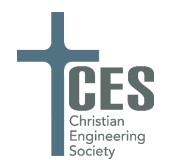Document Type
Paper
Abstract
Engineers work in an objective world, defined by an external reality created by God. As engineers approach problems, they face the difficult challenge of aligning a complicated and unforgiving reality to available analytical engineering and math models. A helpful engineering analysis framework focuses on three models: God’s reality, the engineer’s mental model, and engineering community’s analytical models. The transition between these models structures problem-solving strategy and critical thinking as the engineer restates the problem, plans the analysis, solves the problem, and checks the answer. The framework also engages all three engineering languages (words, sketches, and math) to communicate holistically the nature of the world, the problems in need of a solution, and the solutions engineers develop. The framework drives appropriate worship of God through confidence in an objective reality submitted to His sovereignty, boldness in exercising dominion over creation, pleasure in thinking the thoughts of God after Him, and joy when abstract mathematical constructs coherently describe physical phenomena. The framework parallels the Christian life moving from the objective reality of God to personal forgiveness and salvation, resulting in participation with Christ’s church.
Creative Commons License

This work is licensed under a Creative Commons Attribution-Noncommercial-No Derivative Works 4.0 License.
Copyright
© 2024 Timothy A. Wood. All rights reserved.
A Framework for Engineering Analysis and Worship
Engineers work in an objective world, defined by an external reality created by God. As engineers approach problems, they face the difficult challenge of aligning a complicated and unforgiving reality to available analytical engineering and math models. A helpful engineering analysis framework focuses on three models: God’s reality, the engineer’s mental model, and engineering community’s analytical models. The transition between these models structures problem-solving strategy and critical thinking as the engineer restates the problem, plans the analysis, solves the problem, and checks the answer. The framework also engages all three engineering languages (words, sketches, and math) to communicate holistically the nature of the world, the problems in need of a solution, and the solutions engineers develop. The framework drives appropriate worship of God through confidence in an objective reality submitted to His sovereignty, boldness in exercising dominion over creation, pleasure in thinking the thoughts of God after Him, and joy when abstract mathematical constructs coherently describe physical phenomena. The framework parallels the Christian life moving from the objective reality of God to personal forgiveness and salvation, resulting in participation with Christ’s church.

